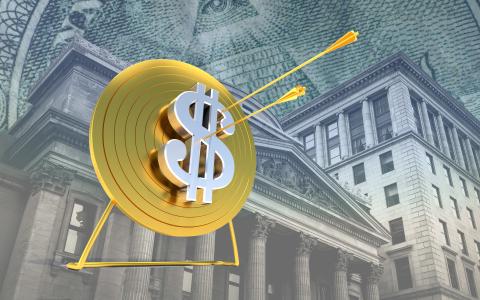
(Bloomberg) - While higher interest rates can juice profits for a slew of lenders, a senior TD Securities strategist warns that the relentless jump in borrowing costs threatens to create fresh problems for the banking sector.
The yield on two-year Treasuries rising to 5% this week represents the “pain trade for a lot of the banks” heading into the fall, said Gennadiy Goldberg, TD’s head of US rates strategy, in a Tuesday interview on Bloomberg Television.
“If you just track unrealized held-to-maturity and available-for-sale losses at banks, the pressure is on,” he said, referring to the securities that financial institutions hold as assets on their balance sheets.
The banking crisis this spring exemplified the risk of higher-than-expected rates. The demise of SVB Financial Group came about in large part because its balance sheet was burdened by long-term loans whose value plummeted as yields rose on the back of Federal Reserve interest-rate hikes.
Goldberg added that higher borrowing costs have the potential to ripple through the economy on a “long and variable” basis.
“At what point does the economy effectively break under the weight of real rates? I don’t think we are there yet,” he added. “But I still think that the market is ignoring a lot of this interest-rate pass through at their own peril.”
On Tuesday, the yield on two-year Treasury notes traded above 5.02%, reaching its highest level since early July. Late Monday, S&P Global Ratings downgraded a number of US lenders, including KeyCorp and Comerica Inc., joining a similar move from Moody’s earlier in the month. S&P cited higher funding costs, as well as a squeeze in liquidity as depositors seek higher yields elsewhere.
Last week, TD Securities was stopped out of a long position on five-year inflation-protected Treasuries. Goldberg and strategist Molly McGown wrote in a note that they “will wait for momentum to stabilize before entering longs again.”
On Tuesday, Goldberg said the “big fear” for would-be Treasury buyers is the prospect of bond losses within the next three to six months, even if these investors are betting that the economy will slow down ahead.
By Carter Johnson



